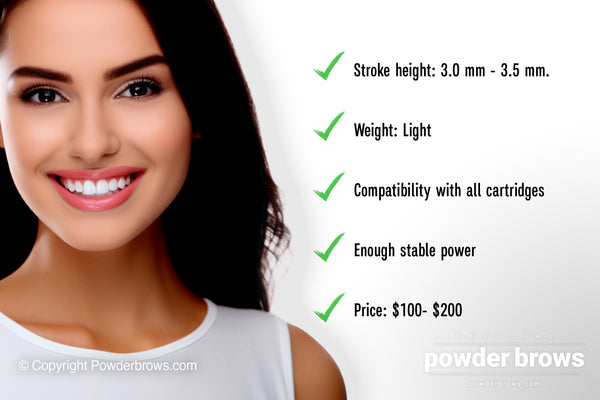2. Principles of choosing the machine
Starting artists often navigate a sea of confusion when embarking on the journey of selecting their first pigmentation machine. The primary challenge lies in how information about these machines is presented.
Understanding the Bias in Machine Information
Many listicles and comparison videos available to students are influenced significantly by affiliate programs. These arrangements, driven by monetary interests, can skew the information towards certain brands or models. As a result, the rankings and recommendations in these resources are often less an indicator of a machine's quality and more a reflection of a manufacturer's advertising investment. It's imperative for artists to approach these sources with a healthy degree of skepticism.
The Reality of Sponsored Advertisements
It's not uncommon for producers to secure higher rankings in listicles through financial means, making these lists more a measure of advertising spend than of product quality. This practice extends to trainers in the field. If a trainer is part of an affiliate program, this relationship will likely influence their recommendations to students or the public. The key for artists is to avoid naivety when selecting a machine to understand the potential biases behind recommendations.
Navigating smart marketing tactics
Sponsored presentations of machines often employ subtle manipulation tactics rather than overt distortions. While some artists might blatantly overraise a machine that offers them the highest affiliate income, a more common approach involves a nuanced narrative. This storyline typically follows a pattern: the artist struggles with imperfect results, tests various machines, and then discovers a particular machine (usually linked to an affiliate deal) that magically improves their outcomes.
Having observed numerous such presentations over the past 15 years, it's clear that some artists are adept at delivering these talking points that appear genuine and relatable. They often present their journey as an exploratory process that organically led them to a "game-changing" machine. However, even the most convincing and seemingly objective comparisons should be taken with a grain of salt. The reality is that many of these endorsements, no matter how authentic they seem, are influenced by sponsorship.
Thus, for artists starting in the field, it's crucial to develop an informed, critical perspective when choosing a pigmentation machine, and this involves recognizing the potential biases in information sources, understanding the subtle tactics of sponsored content, and maintaining a healthy skepticism.
Being cautious before making large investments
Being cautious in investing in a PMU machine is critical, especially for starting artists. Experienced artists often have a history with various machines and understand that more expensive ones can deliver better results. High-end machines may offer technical advantages, such as power regulation sensors. The cost of PMU machines can vary significantly, with an initial investment ranging from a few hundred to several thousand dollars.
Skills Over Equipment
Despite the allure of high-end machines, starting artists must exercise caution in making substantial investments in equipment. Empirical evidence from artists indicates that a more expensive machine does not guarantee a tenfold improvement in results. In training sessions where trainers use the same machines as their students, the results are often superior compared to those achieved with high-end machines.
Holistic Approach to Equipment Choice
Consistent with the Holistic PMU principles discussed on powderbrows.com, an artist should view their machine as one of many factors contributing to the quality of the final result. The choice of machine is important, but its impact is comparable to other crucial decisions like selecting the appropriate pigment for skin type and oiliness, choosing the right color, and employing suitable pigmentation techniques, speed, and needle cartridges. Errors in any of these areas can significantly affect the outcome, regardless of the machine used.
Branding and Client Perception
The belief that clients will recognize and appreciate the use of a high-end machine is a misconception. Clients typically do not know which machine an artist uses before booking an appointment, and showcasing this on social media might generate skepticism rather than attract clients. One can imagine patients being rather suspicious when the doctors try to convince them of their skills by presenting the best scalpels and other equipment they use. Studies have shown that most clients cannot differentiate between high-end and low-cost machines, and their primary concern is the end result, not the equipment used to achieve it.
Prudent Investment Strategies
The conclusion for artists, especially those starting out, is to first generate income from procedures before investing in an expensive machine. Many seasoned artists recommend this approach. If procedure income is sufficient, then purchasing a high-end machine becomes a viable business investment. Conversely, investing heavily in equipment before establishing a steady income stream can be naive, as even the best machines do not necessarily enhance procedure quality or aid in attracting clients. The most reasonable choice for beginners is to start with a more affordable machine.




